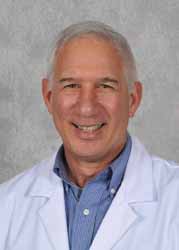BY: VICTOR M. PLAVNER, M.D.
Some people have recovered from COVID-19, but months later they still have symptoms such as shortness of breath, weakness, a racing heart and trouble thinking.
If you are one of these unfortunate “long haulers,” you may continue to be sick even though you have recovered and tested negative for SARS-CoV-2, the virus that causes COVID-19. Most people who get the disease make a full recovery, but it’s estimated that 10%-30% of patients continue to experience symptoms months after their initial diagnosis.
Anyone can be a long hauler
Even young people and those who had only mild cases are affected. About one in five young adults reports prolonged problems, and some people who were never hospitalized can’t climb stairs, get winded easily, and need oxygen for shortness of breath.
Doctors aren’t sure what causes these drawn-out symptoms, but an inflammatory response may be responsible. COVID-19 makes your body’s disease-fighting antibodies overreact, attacking healthy cells and damaging tissues and organs. If this inflammatory response continues, the outcome could be “long Covid” that lasts for weeks or months.
First steps toward treatment
It is not yet well understood how to treat long Covid, but anti-inflammatory drugs may be one answer. Also, doctors are finding that a program of rehabilitation can help. People with lingering fatigue can benefit from gradual exercise, including breathing exercises to increase lung capacity. And those with cognitive issues can recover with the help of a neuropsychologist. Ask your doctor about possible treatment plans.
Since COVID-19 is a relatively new disease, its long-term health effects aren’t fully understood. One thing is certain, however: the best way to avoid complications is to prevent COVID-19.
Common ‘long Covid’ symptoms
If you continue to suffer any of these symptoms after recovering from Covid-19, you may be a Covid long hauler:
- Cough
- Fatigue
- Joint and chest pain
- Shortness of breath
- Headaches
- Muscle pain
- Changes in smell: food may smell bad
- Confusion, forgetfulness, trouble concentrating
 Dr. Plavner is a Maryland Primary Care Physicians, LLC partner, is certified by the American Board of Family Medicine, and practices at the MPCP Arnold office. He earned his medical degree at the University of Louvain, Brussels, Belgium; and at George Washington University Medical Center.
Dr. Plavner is a Maryland Primary Care Physicians, LLC partner, is certified by the American Board of Family Medicine, and practices at the MPCP Arnold office. He earned his medical degree at the University of Louvain, Brussels, Belgium; and at George Washington University Medical Center.



